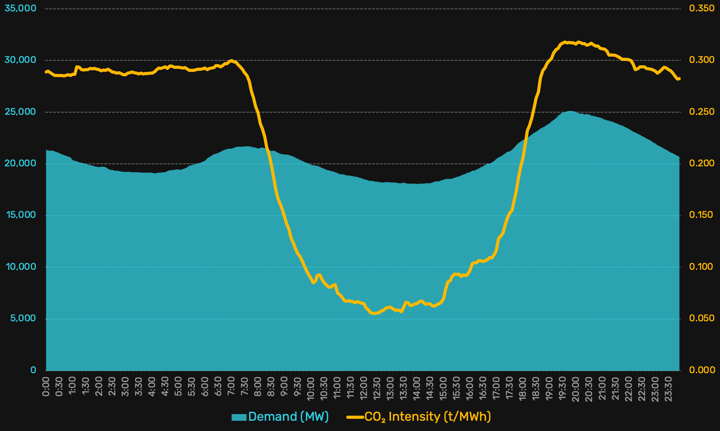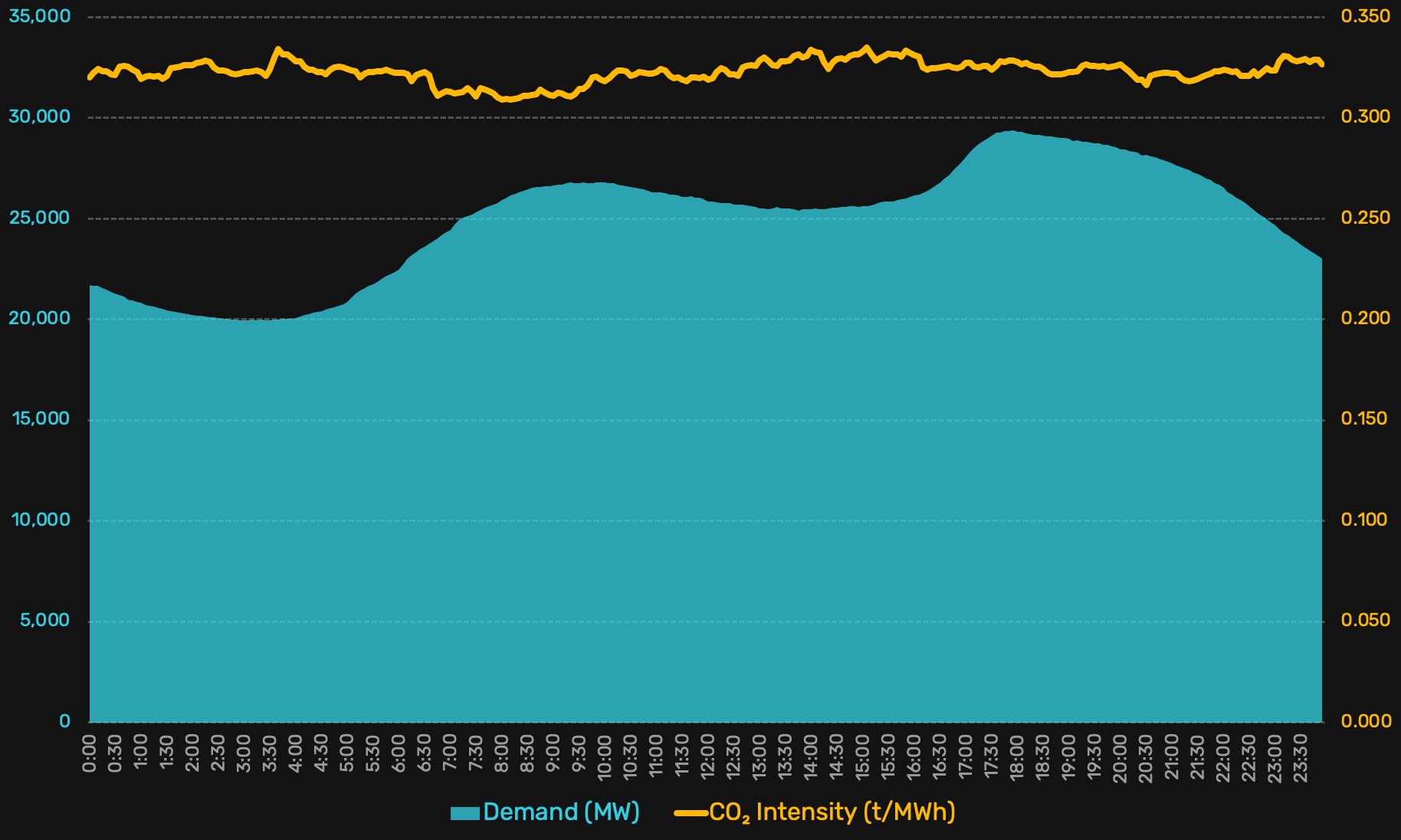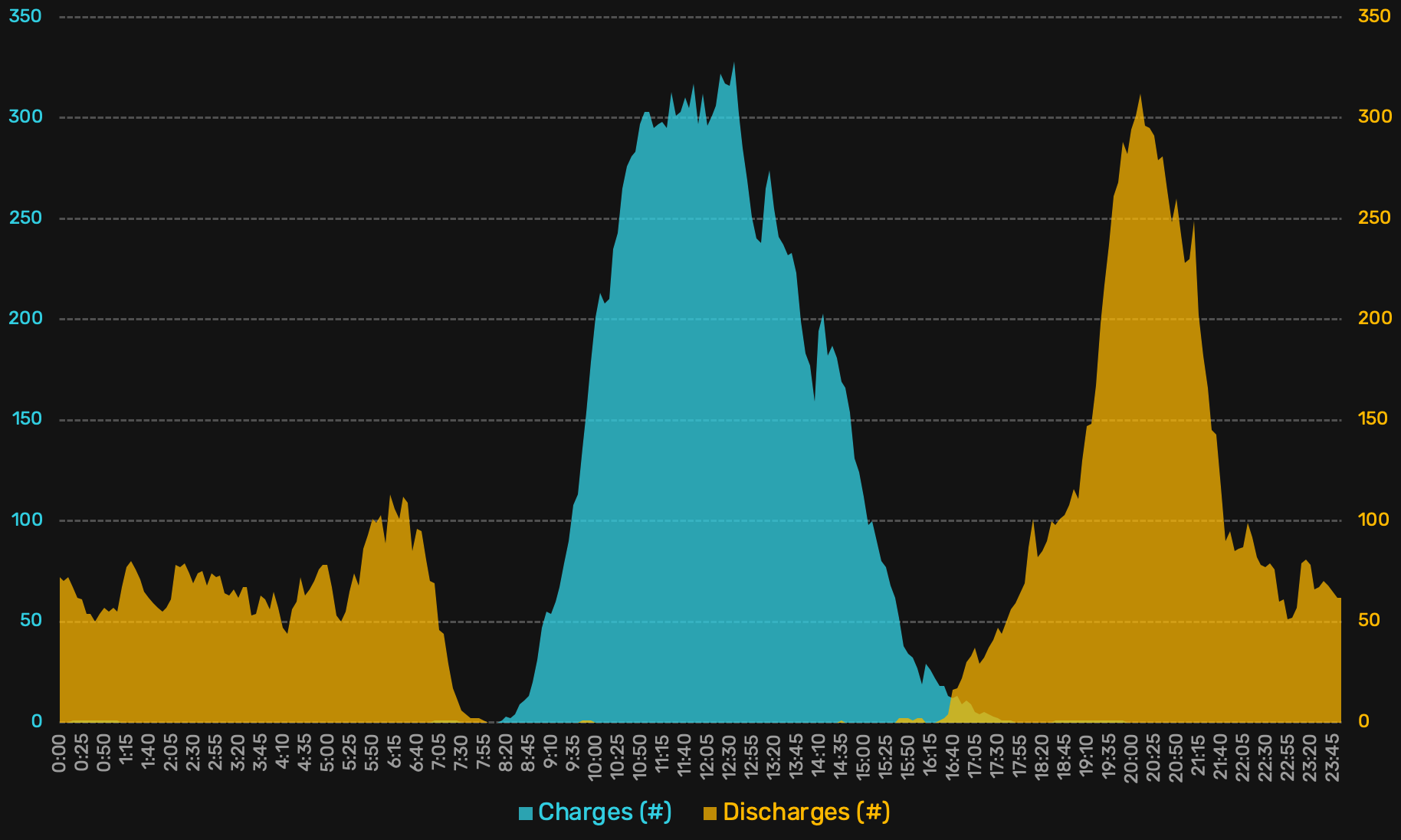In a previous post we discussed California’s Self-Generation Incentive Program (SGIP) and how it can help increase a building’s resiliency by providing a source of backup power in the case of a temporary grid outage. Besides resiliency, being able to time-shift energy consumption using an on-site battery has other benefits for a building owner as well:
- Demand Charges: Commercial utility tariffs often impose a “demand charge” that is computed from the building’s peak electricity consumption. Depending on the consumption characteristics of a building and the available utility tariffs, using a battery to reduce peak power draw from the grid (“peak shaving”) can result in significant bill savings.
- Self-Consumption: For some building owners the ability to increase self-consumption of energy produced by on-site solar might also be attractive, since it increases the amount of time during which a building can operate on 100% clean energy.
It is worth noting that both of these objectives relate to building-level optimization from a financial or an environmental impact point of view. But how does time shifting demand using batteries under these goals affect overall CO₂ emissions from the power grid?
⚖️ Emissions Cost-Benefit Analysis
Installing an on-site battery at a building could actually increase overall CO₂ emissions because procuring raw materials and manufacturing batteries generates emissions. Furthermore, charging and discharging a battery results in round-trip losses which increase overall energy usage. Hence, deploying batteries is only sensible from an environmental point of view if:
- Time-shifting demand increases consumption of zero or low-emissions electricity while decreasing consumption of electricity from a source with a substantial CO₂ footprint.
- The difference in CO₂ intensity is large enough to offset emissions from production and round-trip losses over the lifetime of the battery.
📊 Emissions Variability in CAISO
The California Independent System Operator (CAISO) grid has relatively large amounts of renewable energy, which decreases its overall CO₂ intensity. However, not all kilowatthours are created equal: looking at CAISO data, we can compute the grid’s CO₂ intensity per MWh for various times of the day and see that a grid with comparatively large amounts of renewable energy in its mix can show significant fluctuations in CO₂ intensity during the day.
As an extreme example, let’s take data from March 16th, 2019:

Demand and CO₂ intensity in CAISO on 03-16-2019
On this day the grid was cleanest at 12:20pm when CO₂ emissions were only 0.055 t/MWh, and dirtiest at 8:05pm when CO₂ emissions per MWh were 0.318 t/MWh (or almost six times as high as during the day’s minimum).
An example on the other extreme would be Dec 23rd, 2019, which saw very little variability in terms of CO₂ emissions per MWh during the day:

Demand and CO₂ intensity in CAISO on 12-23-2019
On Dec 23rd 2019 the grid was cleanest at 8:00am, with a CO₂ intensity of 0.309 CO₂ t/MWh, and dirtiest at 3:05pm with 0.335 CO₂ t/MWh. On this particular day the highest CO₂ intensity is only about 8% worse than the lowest CO₂ intensity.
📉 Reducing Emissions With Batteries
What if we took advantage of these daily fluctuations and time-shifted consumption by charging a battery during times of low CO₂ intensity and discharging it at times of high CO₂ intensity? Would the daily swings in CO₂ intensity in the CAISO grid be large enough to result in CO₂ emissions being saved overall?
In order to answer this question, let’s assume a hypothetical battery with:
- A capacity of 1 MWh
- The ability to charge/discharge within 2 hours (“0.5C”)
- A 10% loss on charging (i.e it actually takes 1.1 MWh to fully charge our 1 MWh battery)
Looking at CAISO data from the past two years (from 6/28/2018 to 6/28/2020), we can evaluate the performance of our hypothetical battery in terms of avoided CO₂ emissions. To do that, we assume the battery is charged for 2 hours when the grid is “cleanest” and discharged for 2 hours when the grid is “dirtiest”. Note that we don’t require a single continuous 2-hour window. Running simulations with our hypothetical battery against CAISO data shows that:
On the CAISO grid, a 1 MWh battery could yield an average of 0.13 t (~280 lbs) of avoided CO₂ emissions per day, or about 47 t (~100.000 lbs) per year. During the 2-year period evaluated, there was only a single day with no avoided CO₂ emissions.
It also turns out that the avoided CO₂ emissions are not very sensitive to how fast our hypothetical battery can be charged or discharged: If we doubled the charge/discharge rate, the avoided CO₂ emissions would only increase by about 3%, while halving the rate would decrease avoided CO₂ emissions by about 7%.
🏭 Emissions from Manufacturing Batteries
Having shown that time-shifting electricity use guided by the overall CO₂ intensity of the grid can result in avoided CO₂ emissions within CAISO, we also need to estimate whether the avoided CO₂ emissions are large enough to offset any manufacturing-related CO₂ emissionse over the battery’s lifetime.
Unfortunately it is quite difficult to find good estimates for the overall CO₂ emissions for battery manufacturing, but there are two data points that should give us ballpark figures:
- A 2016 study analyzing the amount of “cradle to grave” CO₂ emissions for a small-volume 24 kWh electric car battery pack arrived at a value of 0.140 CO₂ t/kWh of battery capacity.
- Newer data from 2019 concludes that gigawatt-scale manufacturing of Li-Ion battery cells currently consumes about 65 kWh of energy per kWh of battery capacity. In CAISO, this would translate into about 0.015 CO₂ t/kWh of battery capacity.
Taking data from the first paper that puts CO₂ emissions from battery manufacturing at 45% of total CO₂ emissions, and further assuming that no other parts of the supply chain were optimized, would lead us to estimate that the total amount of CO₂ emissions using the 2019 number for battery manufacturing is somewhere around 0.090 CO₂ t/kWh of battery capacity. This places the CO₂ emissions for manufacturing our hypothetical 1 MWh battery somewhere between 90 t and 140 t.
If we can avoid 47 tons of CO₂ emissions per year with a 1 MWh battery, this means a battery would erase its own carbon footprint in about 2 to 3 years when manufactured with today’s technology.
🎯 Emissions and Building-Level Goals
As mentioned at the beginning of this post, an on-site battery might get deployed with the goal to reduce demand charges or to increase electricity self-consumption. These use cases might result in a charge/discharge schedule that reduces rather than increases avoided CO₂ emissions.
During our simulations over a 2-year period using CAISO data we arrived at the following charge/discharge schedule when attempting to maximize CO₂ emissions avoidance.

Number of days our hypothetical battery would charge or discharge in each 5-minute interval
Maximizing On-Site Consumption
Looking at the shape of the above curve, it is apparent that dispatching the battery to maximize electricity self-consumption from on-site solar aligns well with the goal of maximizing avoided CO₂ emissions: The best battery charge hours fall within times when on-site solar will produce electricity, while the discharge hours happen at a time when there is no output from on-site solar.
Maximizing Peak Shaving
It is also apparent that dispatching the battery to maximize peak shaving doesn’t align well with maximizing avoided CO₂ emissions: There is a large fraction of discharge time between the hours of 10:00 PM and 6:00 AM, which is not a time during which commercial buildings are likely to experience peak consumption.
At the building level, it seems that dispatching the battery to maximize electricity self-consumption is likely to result in more avoided CO₂ emissions than aiming to maximize peak shaving.
✨ Battery Potential in CAISO
Bill Savings Potential
Station A has evaluated about 134,000 commercial and industrial buildings within CAISO and assessed their technical and bill savings potential for an on-site battery, either deployed stand-alone or combined with solar (see the latest data in the Station A App). Our analysis shows that deploying an on-site battery in combination with on-site solar unlocks far greater financial potential:
If an on-site battery were deployed without on-site solar, only about 16% of the buildings we evaluated would get any bill savings, corresponding to 9.4 GWh of battery capacity (see the latest data in the Station A App). However, combining on-site solar and battery dramatically increases this number: 79% of the buildings evaluated would get bill savings, corresponding to 36 GWh of battery capacity (see the latest data in the Station A App).
Furthermore, combining on-site solar and battery yields significant bill savings (more than 10%) for 56% of the buildings evaluated, corresponding to 24 GWh of battery capacity (see the latest data in the Station A App). This is roughly 53% of the 45 GWh of technical potential we identified in CAISO.
Avoided Emissions Potential
Looking at CAISO data, producing the electricity traded through CAISO in 2019 resulted in 51 Mt CO₂ emissions. Assuming that all the batteries with positive financial potential we identified within CAISO actually were to be deployed and dispatched according to the average CO₂ intensity of the grid at any given time, the avoided CO₂ emissions would only increase by about 1.7 Mt, or about 3% of total CO₂ emissions.
Therefore we must conclude that while it has other benefits, an on-site battery doesn’t offer significant potential for avoided CO₂ emissions at the grid level when its dispatch is controlled by building-level goals.
🤓 Lessons Learned
After going through these analyses, we’ve come out with a few key learnings:
-
On-site batteries can offer benefits such as resiliency and the potential to ease grid congestion.
-
There is a significant bill savings potential for behind-the-meter batteries within CAISO today.
-
Daily CO₂ intensity swings in CAISO are so large, that a battery still yields avoided CO₂ emissions even when manufacturing and round-trip losses are accounted for.
-
However, dispatching an on-site battery according to building-level goals won’t unlock the full avoided CO₂ emissions potential that battery technology holds.
In the next part of this series, we will explore how to tap into the full potential of batteries to impact CO₂ emissions!
📚 What to Read Next
- What’s the dirtiest time of day to use electricity?
- A more detailed look at the California Grid Data
- Batteries have a dirty secret
- When to use marginal emissions (and when not to)
